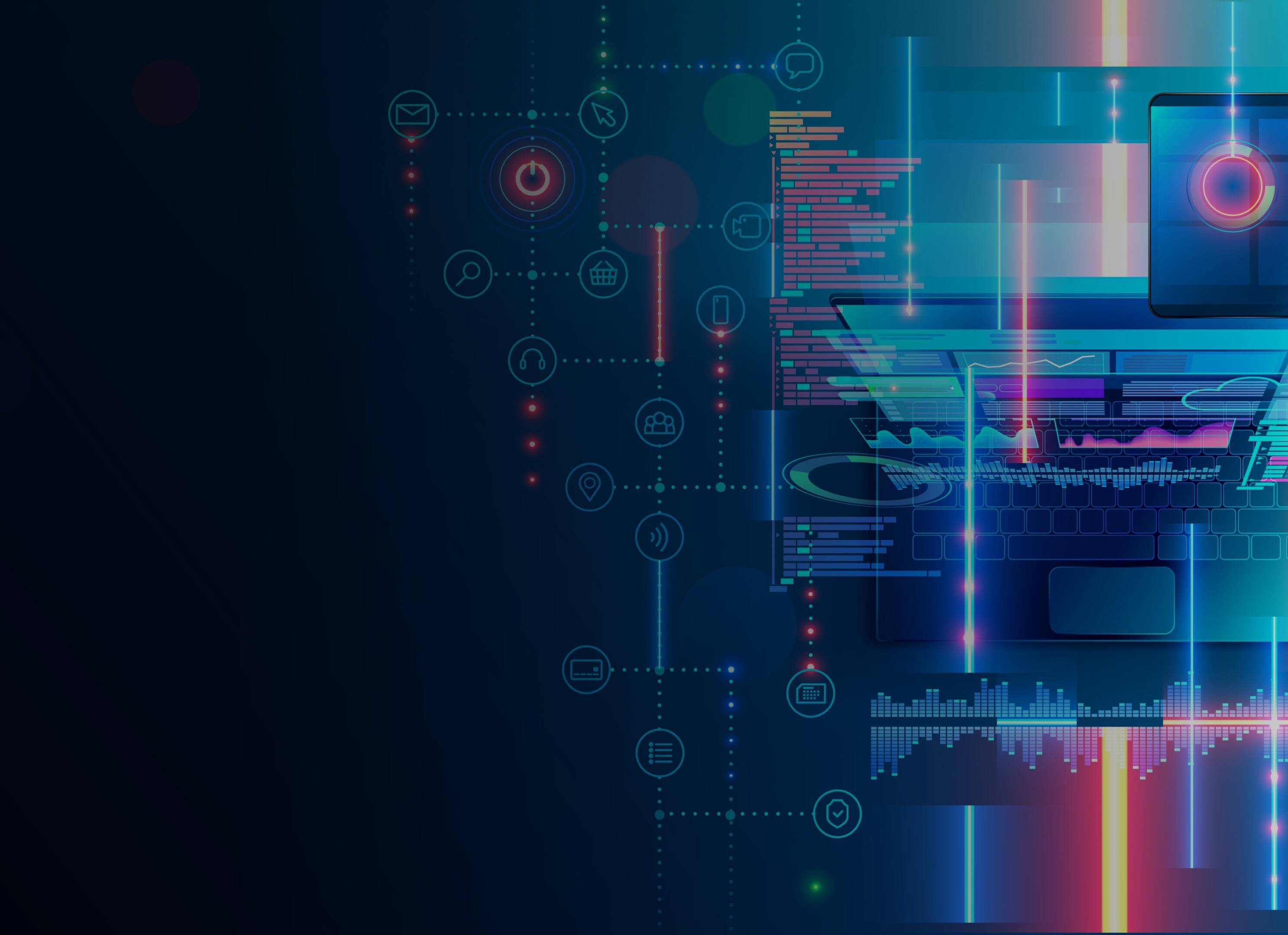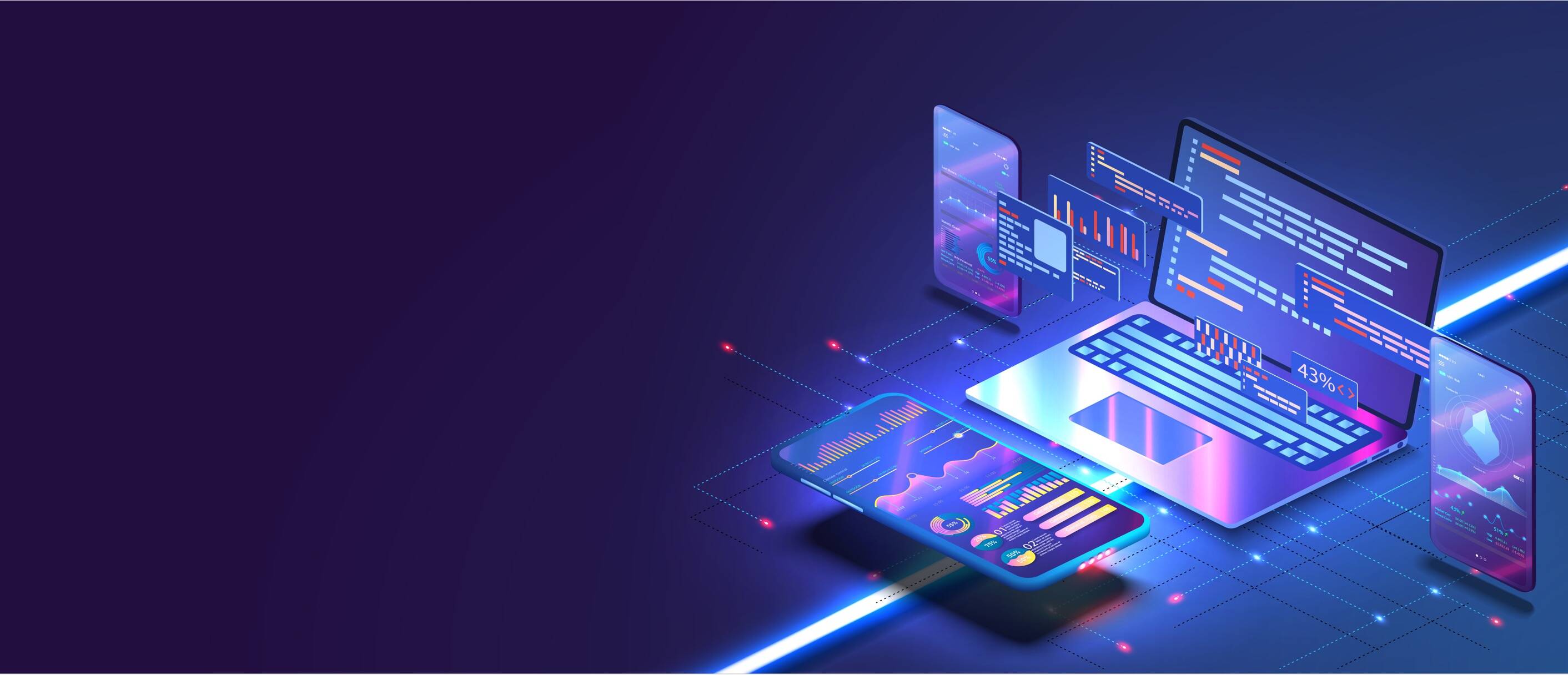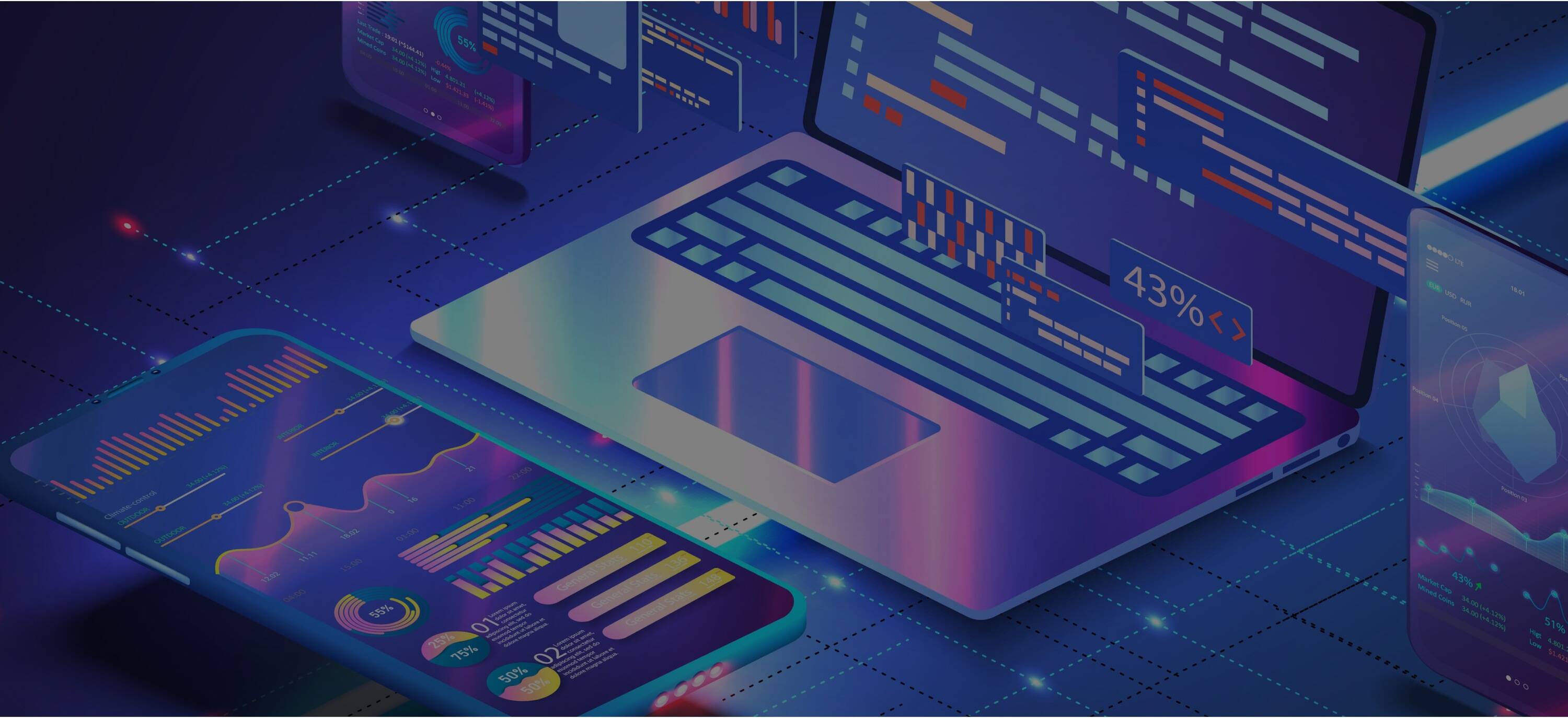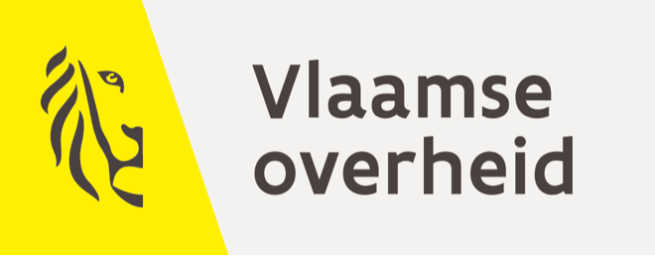
A traditional, static network offers very little information about what is happening on the network. A Software Defined Network, on the other hand, puts the control back in the hands of the administrator, thanks to a software layer that is built onto the existing network.
Network
Software Defined
INNOVATION
Stefan De Smet,
Head of ICT,
Flemish government
“The flemish civil servant is always connected.”



Frank Verschueren,
CSO Armonea
“SD-WAN is ESSENTIAL for
OUR DIGITAL TRANSFORMATION.”

© T. De Boever
"THE TRADITIONAL BUSINESS NETWORK IS OBSOLETE."




“The Flemish civil servant is always correctly connected, regardless of his physical workstation.”
Studied economics and computer science. He is head of the ICT department of the Flemish government.
Stefan De Smet

The agency Het Facilitair Bedrijf of the Flemish government manages the ICT network for seventy departments, administrations and local authorities. The network is spread across some 250 buildings. It connects 17,000 users and 40,000 IoT devices. “The network is definitely business-critical,” says Stefan De Smet, who, as head of the department, is responsible for the joint ICT services of the Flemish government. “Because the time has come for replacement, we are now investing in a network of the latest generation: a Software Defined Local Area Network (SD-LAN).”
Flemish government's SD-LAN
makes passwords superfluous

What is the difference between SD-LAN and SD-WAN?
With a Software Defined Local Area Network (SD-LAN) you can connect your devices in an intelligent and simple way and manage them centrally. The devices can be managed remotely, using software. The administrator no longer needs to manually configure every switch, one by one. Access to the entire network can be arranged in one go via the software. That’s why the term Software Defined Access often crops up in this context.
SD-LAN
In a Software Defined Wide Area Network (SD-WAN) the software ensures that you can manage the traffic on the network between your sites or on one site in an intelligent and simple way. Via SD-WAN you can, for example, allocate extra bandwidth to applications that are essential for your company. This is a solution for companies where personnel work alternately from the office, from home, or on the road.
SD-WAN

Program manager for networks at Het Facilitair Bedrijf
LUC VERDEGEM

Zero-touch
At first glance, many of the advantages of SD-LAN are on the administrator's side. “SD-LAN allows you to roll out new hardware very quickly,” Luc explains. The network is largely self-learning, which means that it recognizes certain hardware, such as IoT sensors, automatically provides it with the right security, and places it in the right network segment. Luc: “That zero-touch deployment will make all the difference. Moreover, we will get a clear view of the nature and extent of the network traffic. If an incident occurs, we can deal with it much more quickly via the central management.”

Het Facilitair Bedrijf
Het Facilitair Bedrijf offers support in the policy domains of the Flemish government and the provincial and local authorities. The agency offers assets, IT & information services, products, and advice. It contributes to the proper functioning of the Flemish government as a whole.

More secure
The greatest advantage, however, lies with the user. Software Defined Access makes the use of passwords superfluous. Security is based on certificates. Via the certificate on their device, the user automatically gets access to the right network segment, with the right access rights for applications and data, perfectly attuned to their role. “The Flemish civil servant is thus always correctly connected, regardless of their physical workstation,” says Stefan. “To do this, we use the zero-trust security principle. The employee only gains access to the applications and data they are allowed to use as part of their job.”

“We are in the middle of a digital transformation”, says CSO Frank Verschueren. "We still had a telephone switchboard in all our centers, even though our residents were all making calls on their own mobile phones. We have embraced videoconferencing so that we can offer our residents that option too. It uses extra data and so we need more bandwidth.”
In addition to a solution with more bandwidth, Armonea also wanted a reliable network. “The electronic care file, for example, which contains information on the medications the residents are taking, has to be permanently available to our caregivers.” Armonea therefore wanted network redundancy, via two different carriers: copper and coax. This ensures the availability of the network even when one of the two connections is down.
SD-WAN: cornerstone of digital transformation at care company Armonea

Frank Verschueren has been CSO at Armonea since 2019. He is responsible for IT, facility, greenfields, and renovations.
Frank Verschueren

Armonea requested quotes from various different providers. “At the time, Proximus was the only provider who could offer us a Software Defined Wide Area Network (SD-WAN)”, said Frank. “But it wasn’t easy. It took a lot of discussion to come up with a proposal that was a good fit with our requirements.”
SD-WAN builds a software layer on top of the network so that data traffic between sites, personnel and residents can be easily managed. “It’s a fairly new concept. But as a result of the good dialogue with Proximus we came up with a solution to meet our needs.”
SD-WAN enables us to switch rapidly: not only to roll out new applications, but also to include new sites on the network.
“The network security is now being managed by a professional partner. They have the expertise that we didn’t have internally. At the same time, we get a clear overview about what’s happening on the network, enabling us to check and give guidance on the role of the partner if necessary.”
On the IT level, Armonea wants to offer as good and secure an environment as possible, both for personnel and residents. “That will help us to offer the best care possible. And that’s really what it’s all about.”

Discover the full interview
Armonea is a group of 86 care centers, assisted living houses and residences. Approx. 6,500 staff members are responsible for the care and service provided to 9,000 residents.


What is the difference between SD-LAN and SD-WAN?
With a Software Defined Local Area Network (SD-LAN) you can connect your devices in an intelligent and simple way and manage them centrally. The devices can be managed remotely, using software. The administrator no longer needs to manually configure every switch, one by one. Access to the entire network can be arranged in one go via the software. That’s why the term Software Defined Access often crops up in this context.
SD-LAN
In a Software Defined Wide Area Network (SD-WAN) the software ensures that you can manage the traffic on the network between your sites or on one site in an intelligent and simple way. Via SD-WAN you can, for example, allocate extra bandwidth to applications that are essential for your company. This is a solution for companies where personnel work alternately from the office, from home, or on the road.
SD-WAN
Rapid switch
Both residents and personnel are enjoying the extra bandwidth, but naturally there is more to it than that. “As I said: SD-WAN is essential in the context of our ongoing digital transformation. Among other things, we will roll out a Building Management System, which will enable us to react very quickly to potential incidents. Tools to make videocalling easier for the residents will also be added to the network. In addition, every employee gets their own login, to facilitate direct communication via the network.” Finally, SD-WAN enables Armonea to switch rapidly: not only to roll out new applications, but also to include new sites on the network.


5 IT trends
for companies and SMEs
AI and IoT ensure more powerful and richer applications. “We want apps that are fast and secure and do what we ask”, says Kristof Van der Stadt. The editor-in-chief at the IT magazine Data News identifies five trends for companies and SMEs.
2
“Once you’ve got your connectivity and cloud use sorted, then you need to deal with security and privacy. The increase in phishing and ransomware is really alarming.” To better protect the business network, there probably needs to be a strict separation between IT use for work and IT use for private life. That can be done by linking the identity of the user to business applications. The investment in extra security – for example in identity & access management – obviously costs money. “But that’s how a business avoids even higher costs.”
MORE FOCUS ON SECURITY AND PRIVACY
1
Last year exposed the truth. The traditional business network is obsolete. Everyone needs to be able to work from any location whatsoever. Focusing on your own business network and giving access to personnel via VPN is not the best strategy in the long term. “SD-WAN can be the solution here. Edge computing can also be a useful route for teleworking. The traditional cloud is not always suitable for large business applications because of the issue of latency. 5G, on the other hand, is suitable if you want to avoid problems of bandwidth and latency.”
A NEW LOOK AT CONNECTIVITY AND CLOUD

5
In the short term businesses will continue to invest in more automation, with artificial intelligence as the driving force. “Robotic Process Automation (RPA) is the springboard to AI, especially in combination with low-code and no-code development. This also brings innovative technology within reach of the small SME.” RPA usually starts at quite a modest level, often within finance and administration, after which it gathers speed in other departments. “The reliability and performances of AI continue to increase. As it matures, the technology will also increasingly reinforce the legacy applications of a business.”
AI IS STILL THE BUZZWORD OF THE MOMENT
4
When we go back to work at the office more often, it is highly likely that we will be using new, smart applications when we get there. “Some of them have emerged in response to the healthcare crisis. Take, for example, the smart camera at the entrance to the company building: it can check whether the visitor is wearing a facemask and also measure their temperature.” In the office, IoT will be increasingly focused on the individual user. “For example, the air-conditioning will adapt automatically to the preferences of whoever has checked in to that workspace.”
IOT CONTINUES TO GROW
3
Anyone who uses intuitive and high-performance apps in their free time expects that same comfort in the workplace. “We want the same ease of use at work as we have at home”, said Kristof Van der Stadt. “Business applications have to be fast and user-friendly – with the requisite security.” At the same time, clients expect a higher level of service. Attentive companies enhanced their existing consumer apps during the lockdown, for example with a system for making an appointment to visit a shop. “We will continue to use those kinds of applications even after Corona.”
EMPLOYEES WANT A PROBLEM-FREE USER EXPERIENCE
“WE WANT THE SAME EASE OF USE FOR IT APPLICATIONS AT WORK AS we have AT HOME.”
Kristof Van der Stadt
Hoofdredacteur Data News

© T. De Boever

INNOVATION
Software Defined
Network
A traditional, static network offers very little information about what is happening on the network. A Software Defined Network, on the other hand, puts the control back in the hands of the administrator, thanks to a software layer that is built onto the existing network.
Stefan De Smet,
Head of ICT,
Flemish government
“The flemish civil servant is always connected.”



Frank Verschueren,
CSO Armonea
“SD-WAN is ESSENTIAL for
OUR DIGITAL TRANSFORMATION.”

© T. De Boever
"THE TRADITIONAL BUSINESS NETWORK IS OBSOLETE."



Zero-touch
At first glance, many of the advantages of SD-LAN are on the administrator's side. “SD-LAN allows you to roll out new hardware very quickly,” Luc explains. The network is largely self-learning, which means that it recognizes certain hardware, such as IoT sensors, automatically provides it with the right security, and places it in the right network segment. Luc: “That zero-touch deployment will make all the difference. Moreover, we will get a clear view of the nature and extent of the network traffic. If an incident occurs, we can deal with it much more quickly via the central management.”
Program manager for networks at Het Facilitair Bedrijf
LUC VERDEGEM

More secure
The greatest advantage, however, lies with the user. Software Defined Access makes the use of passwords superfluous. Security is based on certificates. Via the certificate on their device, the user automatically gets access to the right network segment, with the right access rights for applications and data, perfectly attuned to their role. “The Flemish civil servant is thus always correctly connected, regardless of their physical workstation,” says Stefan. “To do this, we use the zero-trust security principle. The employee only gains access to the applications and data they are allowed to use as part of their job.”
The agency Het Facilitair Bedrijf of the Flemish government manages the ICT network for seventy departments, administrations and local authorities. The network is spread across some 250 buildings. It connects 17,000 users and 40,000 IoT devices. “The network is definitely business-critical,” says Stefan De Smet, who, as head of the department, is responsible for the joint ICT services of the Flemish government. “Because the time has come for replacement, we are now investing in a network of the latest generation: a Software Defined Local Area Network (SD-LAN).”
Flemish government's
SD-LANmakes passwords superfluous

Studied economics and computer science. He is head of the ICT department of the Flemish government.
Stefan De Smet

“The Flemish civil servant is always correctly connected, regardless of his physical workstation.”
Het Facilitair Bedrijf
Het Facilitair Bedrijf offers support in the policy domains of the Flemish government and the provincial and local authorities. The agency offers assets, IT & information services, products, and advice. It contributes to the proper functioning of the Flemish government as a whole.


What is the difference between SD-LAN and SD-WAN?
With a Software Defined Local Area Network (SD-LAN) you can connect your devices in an intelligent and simple way and manage them centrally. The devices can be managed remotely, using software. The administrator no longer needs to manually configure every switch, one by one. Access to the entire network can be arranged in one go via the software. That’s why the term Software Defined Access often crops up in this context.
SD-LAN
In a Software Defined Wide Area Network (SD-WAN) the software ensures that you can manage the traffic on the network between your sites or on one site in an intelligent and simple way. Via SD-WAN you can, for example, allocate extra bandwidth to applications that are essential for your company. This is a solution for companies where personnel work alternately from the office, from home, or on the road.
SD-WAN



Armonea requested quotes from various different providers. “At the time, Proximus was the only provider who could offer us a Software Defined Wide Area Network (SD-WAN)”, said Frank. “But it wasn’t easy. It took a lot of discussion to come up with a proposal that was a good fit with our requirements.”
SD-WAN builds a software layer on top of the network so that data traffic between sites, personnel and residents can be easily managed. “It’s a fairly new concept. But as a result of the good dialogue with Proximus we came up with a solution to meet our needs.”


Frank Verschueren has been CSO at Armonea since 2019. He is responsible for IT, facility, greenfields, and renovations.
Frank Verschueren
Rapid switch
Both residents and personnel are enjoying the extra bandwidth, but naturally there is more to it than that. “As I said: SD-WAN is essential in the context of our ongoing digital transformation. Among other things, we will roll out a Building Management System, which will enable us to react very quickly to potential incidents. Tools to make videocalling easier for the residents will also be added to the network. In addition, every employee gets their own login, to facilitate direct communication via the network.” Finally, SD-WAN enables Armonea to switch rapidly: not only to roll out new applications, but also to include new sites on the network.

SD-WAN enables us to switch rapidly: not only to roll out new applications, but also to include new sites on the network.
“The network security is now being managed by a professional partner. They have the expertise that we didn’t have internally. At the same time, we get a clear overview about what’s happening on the network, enabling us to check and give guidance on the role of the partner if necessary.”
On the IT level, Armonea wants to offer as good and secure an environment as possible, both for personnel and residents. “That will help us to offer the best care possible. And that’s really what it’s all about.”
Armonea is a group of 86 care centers, assisted living houses and residences. Approx. 6,500 staff members are responsible for the care and service provided to 9,000 residents.

What is the difference between SD-LAN and SD-WAN?
With a Software Defined Local Area Network (SD-LAN) you can connect your devices in an intelligent and simple way and manage them centrally. The devices can be managed remotely, using software. The administrator no longer needs to manually configure every switch, one by one. Access to the entire network can be arranged in one go via the software. That’s why the term Software Defined Access often crops up in this context.
SD-LAN
In a Software Defined Wide Area Network (SD-WAN) the software ensures that you can manage the traffic on the network between your sites or on one site in an intelligent and simple way. Via SD-WAN you can, for example, allocate extra bandwidth to applications that are essential for your company. This is a solution for companies where personnel work alternately from the office, from home, or on the road.
SD-WAN

Discover the full interview
“We are in the middle of a digital transformation”, says CSO Frank Verschueren. "We still had a telephone switchboard in all our centers, even though our residents were all making calls on their own mobile phones. We have embraced videoconferencing so that we can offer our residents that option too. It uses extra data and so we need more bandwidth.”
In addition to a solution with more bandwidth, Armonea also wanted a reliable network. “The electronic care file, for example, which contains information on the medications the residents are taking, has to be permanently available to our caregivers.” Armonea therefore wanted network redundancy, via two different carriers: copper and coax. This ensures the availability of the network even when one of the two connections is down.
SD-WAN: cornerstone of digital transformation at care company Armonea

1
Last year exposed the truth. The traditional business network is obsolete. Everyone needs to be able to work from any location whatsoever. Focusing on your own business network and giving access to personnel via VPN is not the best strategy in the long term. “SD-WAN can be the solution here. Edge computing can also be a useful route for teleworking. The traditional cloud is not always suitable for large business applications because of the issue of latency. 5G, on the other hand, is suitable if you want to avoid problems of bandwidth and latency.”
A NEW LOOK AT CONNECTIVITY AND CLOUD
2
“Once you’ve got your connectivity and cloud use sorted, then you need to deal with security and privacy. The increase in phishing and ransomware is really alarming.” To better protect the business network, there probably needs to be a strict separation between IT use for work and IT use for private life. That can be done by linking the identity of the user to business applications. The investment in extra security – for example in identity & access management – obviously costs money. “But that’s how a business avoids even higher costs.”
MORE FOCUS ON SECURITY AND PRIVACY
3
Anyone who uses intuitive and high-performance apps in their free time expects that same comfort in the workplace. “We want the same ease of use at work as we have at home”, said Kristof Van der Stadt. “Business applications have to be fast and user-friendly – with the requisite security.” At the same time, clients expect a higher level of service. Attentive companies enhanced their existing consumer apps during the lockdown, for example with a system for making an appointment to visit a shop. “We will continue to use those kinds of applications even after Corona.”
EMPLOYEES WANT A PROBLEM-FREE USER EXPERIENCE
4
When we go back to work at the office more often, it is highly likely that we will be using new, smart applications when we get there. “Some of them have emerged in response to the healthcare crisis. Take, for example, the smart camera at the entrance to the company building: it can check whether the visitor is wearing a facemask and also measure their temperature.” In the office, IoT will be increasingly focused on the individual user. “For example, the air-conditioning will adapt automatically to the preferences of whoever has checked in to that workspace.”
IOT CONTINUES TO GROW
“WE WANT THE SAME EASE OF USE FOR IT APPLICATIONS AT WORK AS we have AT HOME.”
Kristof Van der Stadt
Hoofdredacteur Data News
5
In the short term businesses will continue to invest in more automation, with artificial intelligence as the driving force. “Robotic Process Automation (RPA) is the springboard to AI, especially in combination with low-code and no-code development. This also brings innovative technology within reach of the small SME.” RPA usually starts at quite a modest level, often within finance and administration, after which it gathers speed in other departments. “The reliability and performances of AI continue to increase. As it matures, the technology will also increasingly reinforce the legacy applications of a business.”
AI IS STILL THE BUZZWORD OF THE MOMENT
5 IT trends
for companies and SMEs
AI and IoT ensure more powerful and richer applications. “We want apps that are fast and secure and do what we ask”, says Kristof Van der Stadt. The editor-in-chief at the IT magazine Data News identifies five trends for companies and SMEs.


© T. De Boever